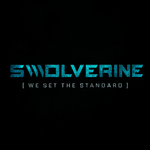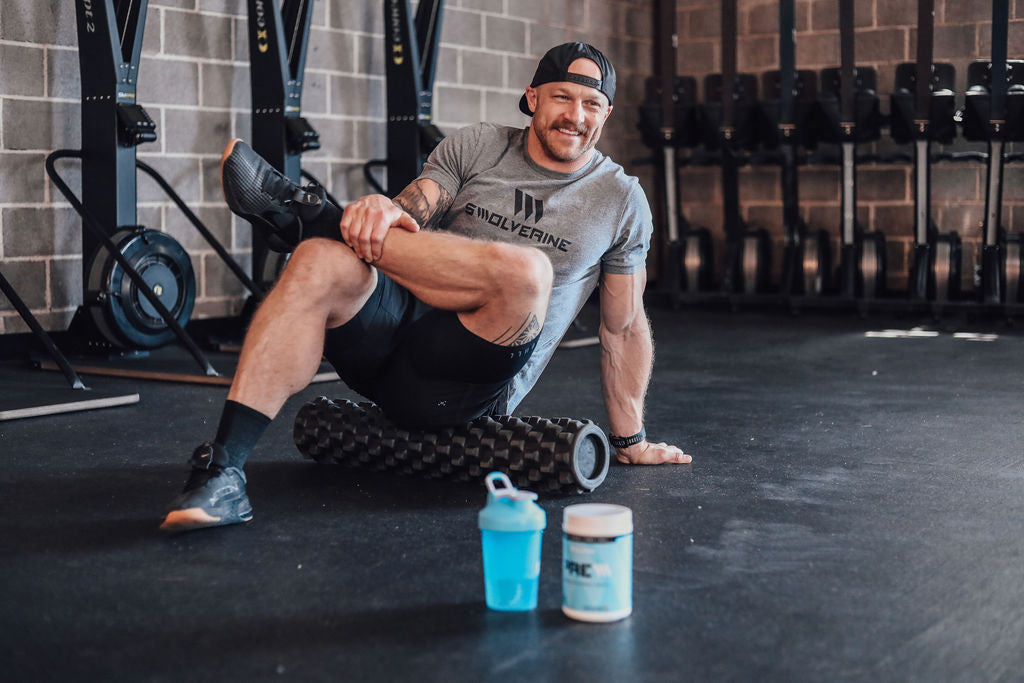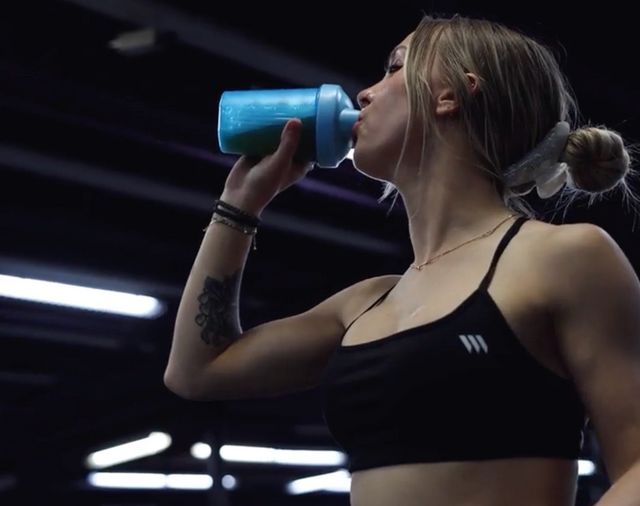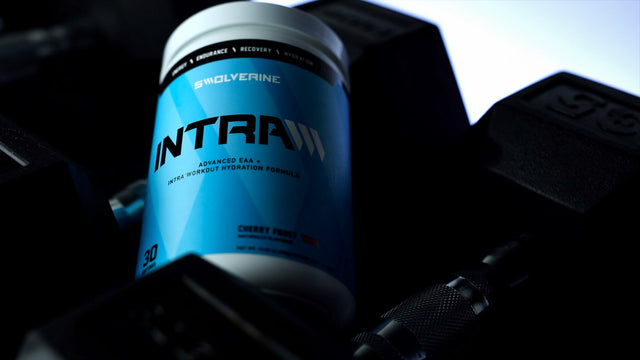If you’ve ever crushed a tough workout and felt the ache the next day — or two — you’ve experienced muscle soreness, more specifically, DOMS (Delayed Onset Muscle Soreness). While some soreness is a normal part of progress, too much of it can leave you sidelined, stiff, and frustrated.
Understanding muscle soreness isn’t just about knowing why you’re sore — it’s about learning how to recover faster, reduce pain, and keep training consistently. Muscle recovery is where the real gains happen, and mismanaging it can lead to overtraining, poor performance, or even injury.
“DOMS is associated with structural muscle damage, inflammation, and enzyme leakage — all of which play a role in the recovery process and subsequent adaptations.” — Cheung et al., Sports Medicine
In this guide, we’ll break down what causes soreness, how long it typically lasts, and what science-backed strategies you can use to speed up recovery — from sleep and nutrition to supplements like ZMT, INTRA, and WHEY ISOLATE.
Ready to recover smarter and train harder?
What Causes Muscle Soreness?
Muscle soreness — especially the kind that sets in 12 to 48 hours after a workout — is typically a result of DOMS, or Delayed Onset Muscle Soreness. It’s not just lactic acid or a “good workout pain.” It’s a complex inflammatory response to microscopic damage in the muscle fibers, particularly after unfamiliar or intense activity.
The most common trigger? Eccentric movements — the lowering phase of exercises like squats, deadlifts, or bicep curls — which place high mechanical tension on the muscle while it’s lengthening. This mechanical stress causes controlled damage, which the body then repairs and reinforces, leading to strength and muscle gains.
“DOMS is primarily caused by eccentric exercise-induced muscle damage, not lactic acid buildup. The resulting inflammation, enzyme release, and swelling contribute to soreness.” — Proske & Morgan, The Journal of Physiology
Additional contributors include:
-
High training volume or intensity
-
Novel movements or routines
-
Inadequate warm-ups or recovery protocols
It’s important to understand that while some soreness is normal — even helpful — excessive soreness can interfere with performance, reduce mobility, and increase injury risk if you’re not recovering adequately.
How Long Does Muscle Soreness Last?
Most episodes of DOMS peak between 24 to 72 hours after a training session, especially when the workout includes high eccentric loading, high volume, or novel movements. For beginners, soreness may last even longer, while more advanced trainees typically experience shorter, less intense episodes as their muscles adapt over time.
Here’s a general timeline:
-
12–24 hours post-exercise: soreness begins
-
24–48 hours: peak soreness and stiffness
-
48–72 hours: symptoms begin to decline
-
72+ hours: should be mostly resolved (unless overtraining or injury occurred)
“DOMS duration is influenced by the degree of muscle damage, training history, and recovery practices. Trained individuals typically recover faster due to neural and structural adaptations.” — Clarkson & Hubal, Journal of Strength and Conditioning Research
Signs It’s Not Normal Soreness:
-
Pain that lasts more than 5 days
-
Sharp, localized pain or swelling
-
Limited range of motion that doesn’t improve with movement
-
Persistent fatigue, joint pain, or sleep disruption (potential overreaching or injury)
Recovery timelines depend not only on the workout, but on your nutrition, sleep, hydration, and supplementation. If you’re not addressing these recovery factors, soreness may linger and limit your training progress.
The Best Strategies And Supplements for Muscle Recovery
Recovering from soreness isn’t just about waiting it out — it’s about giving your body the tools it needs to repair damaged muscle tissue, reduce inflammation, and restore performance. These evidence-based strategies will help you bounce back faster and train smarter, not harder.
Prioritize Sleep and Rest
Sleep is the single most important — and most overlooked — recovery tool. During deep sleep, your body produces growth hormone, reduces systemic inflammation, and initiates critical tissue repair processes. Poor sleep increases cortisol, delays recovery, and worsens soreness.
ZMT is specifically designed to improve sleep quality while supporting testosterone and growth hormone levels — both of which are essential for post-exercise recovery and lean muscle preservation.
“Growth hormone secretion peaks during slow-wave sleep and plays a significant role in protein synthesis and muscle repair.” — Van Cauter & Plat, Hormone Research
Takeaway: Aim for 7–9 hours of uninterrupted sleep. Supplement with ZMT to support hormone-driven recovery and reduce soreness overnight.
Active Recovery Works — Don’t Just Sit Still
While the instinct might be to completely rest when you're sore, active recovery — light, low-impact movement — is often more effective at reducing DOMS than total inactivity. Activities like walking, cycling, swimming, yoga, or mobility work help stimulate blood flow, deliver nutrients to damaged tissue, and clear metabolic byproducts from muscle cells.
“Low-intensity exercise increases blood flow and facilitates lactate clearance, which can reduce muscle soreness and accelerate recovery after eccentric exercise.” — Dupuy et al., Sports Medicine
Unlike high-intensity sessions, active recovery promotes circulation without compounding fatigue or inflammation. This makes it ideal on the day after a tough workout, or between heavy training sessions.
Active recovery options:
-
15–30 minutes of zone 2 cardio (e.g., incline walk, light row)
-
Mobility circuits or dynamic stretching
-
Bodyweight movements at 40–50% effort
Takeaway: Don’t skip movement entirely. Light activity helps flush soreness and primes your body for your next training day.
Hydration and Electrolytes
Staying hydrated isn’t just about avoiding cramps — it’s critical for muscle repair, nutrient delivery, inflammation control, and recovery from soreness. Dehydration can worsen DOMS, impair performance, and delay tissue regeneration, especially if you’re sweating heavily or training in hot conditions.
“Even mild dehydration impairs muscle contractile function, delays recovery, and increases the perception of soreness.” — Judelson et al., Journal of Athletic Training
Electrolytes like sodium, potassium, magnesium, and calcium are also essential. They regulate fluid balance, nerve signaling, and muscle function — all of which play a role in post-exercise recovery.
INTRA from Swolverine is a clinical-dose intra-workout formula that contains electrolytes, glutamine, and L-carnitine to support hydration, energy metabolism, and muscle preservation during and after training. It’s especially helpful on high-volume or two-a-day sessions when recovery demands are elevated.
Takeaway: Sip electrolytes during training and throughout the day to stay hydrated and speed up recovery. INTRA can double as both a workout hydration tool and a post-training recovery booster.
Post-Workout Nutrition
What you eat after training plays a critical role in how quickly and effectively your muscles recover. Post-workout nutrition should prioritize two things: protein to repair muscle damage, and carbohydrates to replenish glycogen and reduce muscle protein breakdown.
“Consuming protein and carbohydrate post-exercise enhances muscle protein synthesis and accelerates recovery, particularly after resistance or eccentric exercise.” — Ivy & Portman, Journal of Sports Science & Medicine
WHEY PROTEIN ISOLATE is ideal for post-workout recovery because it delivers fast-digesting, high-quality protein without added carbs, fats, or bloating agents. With 26g of pure protein per scoop, it supports lean muscle repair and helps reduce the severity and duration of DOMS.
Pairing your protein with a clean carb source like CLEAN CARBS — made from Carb10®, wild yam, coconut sugar, and D-ribose — helps restore energy, support muscle cell hydration, and reduce muscle catabolism.
Ideal post-workout combo:
-
1 scoop Whey Isolate
-
1 scoop Clean Carbs
-
Consume within 30–60 minutes of training
Takeaway: Prioritize fast-digesting protein and clean carbs immediately post-workout to repair damaged tissue and kickstart the recovery process.
Supplement Support for Recovery
While sleep, hydration, and nutrition form the foundation of muscle recovery, targeted supplements can accelerate the process — especially after high-volume training or during fat-loss phases when recovery capacity is lower. The right ingredients help reduce soreness, support tissue repair, and improve performance from one session to the next.
Key Recovery Ingredients:
-
Glutamine – Supports muscle repair, immune health, and gut integrity
-
L-Carnitine – Enhances fat metabolism and reduces muscle damage
-
Collagen – Promotes connective tissue repair, joint health, and tendon resilience
-
Tart Cherry (CherryPURE®) – Provides antioxidant support and reduces inflammation
INTRA contains both glutamine and L-carnitine, making it an ideal intra- and post-workout recovery supplement. It supports muscle preservation, endurance, and hydration — all crucial when training hard or during calorie deficits.
COLLAGEN PROTEIN delivers type I and III collagen peptides, supporting joint and soft tissue recovery — particularly helpful if your soreness lingers in tendons or connective tissue rather than just muscle fibers.
“Supplementing with hydrolyzed collagen and vitamin C before training may stimulate collagen synthesis and reduce injury risk in connective tissues.” — Shaw et al., American Journal of Clinical Nutrition
Takeaway: Adding recovery-focused supplements like INTRA and collagen can help you bounce back faster, reduce DOMS severity, and support long-term joint and muscle health.
Should You Train Through Soreness?
It’s a common question: Should I work out if I’m sore? The answer depends on the severity of the soreness, your training phase, and how your body is responding.
If you’re dealing with mild to moderate DOMS, light training can actually be beneficial. Moving your body increases blood flow, delivers nutrients to recovering muscles, and helps reduce stiffness. This could mean doing a modified version of your planned workout, reducing load or volume, or switching to an active recovery session.
“Training during mild soreness does not impair performance or recovery, and in some cases can reduce subjective soreness through increased circulation.” — Zainuddin et al., Journal of Athletic Training
However, there are times when soreness is a sign to rest or modify:
-
Pain lasts more than 72 hours with no improvement
-
You’re experiencing joint pain or sharp, localized discomfort
-
You feel fatigued, under-recovered, or emotionally burned out
-
Sleep, performance, or mood are declining (signs of overreaching)
Smarter Programming Strategies:
-
Use periodization: cycle intensity and volume over time
-
Plan deload weeks every 4–6 weeks to allow full recovery
-
Avoid maxing out every session — stimulate, don’t annihilate
Takeaway: It’s okay to train through mild soreness with intention. But respect your body’s signals, and build in rest, deloads, and recovery tools to stay consistent for the long haul.
Final Takeaway – Train Hard, Recover Smarter
Muscle soreness is a natural part of training — but how you respond to it determines whether it holds you back or pushes you forward. Managing soreness through intentional recovery strategies allows you to stay consistent, improve performance, and reduce injury risk over time.
Here’s your recovery toolkit:
-
Prioritize sleep and hormonal balance with ZMT
-
Use active recovery to keep blood flowing and reduce stiffness
-
Stay hydrated with electrolytes like those in INTRA
-
Refuel post-workout with WHEY ISOLATE and CLEAN CARBS
-
Support joint and tissue repair with COLLAGEN PROTEIN
“Smart recovery isn’t about doing less — it’s about doing what’s necessary to adapt, grow, and train again tomorrow.” — Halson, Sports Science Exchange
Muscle soreness doesn’t mean you’re broken — it means your body is adapting. With the right support, you can recover faster, train smarter, and keep moving toward your goals.
→ Shop Swolverine Recovery Stack
→ Work With a Coach at The Swole Kitchen







